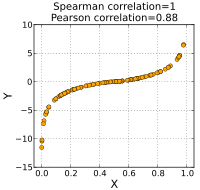
Photo from wikipedia
ABSTRACT Despite high spatial coverage, radar-based Quantitative Precipitation Estimates (QPE) are affected by different sources of errors. Regardless of various techniques to merge these estimates with rain gauges, some errors… Click to show full abstract
ABSTRACT Despite high spatial coverage, radar-based Quantitative Precipitation Estimates (QPE) are affected by different sources of errors. Regardless of various techniques to merge these estimates with rain gauges, some errors still remain in the final product. This study focused on the relationship between these errors and altitude for a radar-only product (RZC) and a cross-validated-merged-with-gauge product (CPC-CV) in Switzerland using 16 years of hourly data based on two log-transformed metrics (bias and scatter). For each site, the bias is a measure of the mean error and the scatter is a robust estimate of the dispersion of the error around the mean. The results showed that the bias has a negative Pearson correlation coefficient with altitude, while the scatter has a positive correlation for both RZC and CPC-CV products during the entire period. Considering the effect of the old and the new networks, the errors are generally reduced using the new radar network. However, the relationship between altitude and the errors is still present. Regarding the seasonality effect, the results showed a significant underestimation at low altitudes and the weakest bias correlation in winter, while many stations showed overestimation in summer. For scatter, the correlation with altitude was highest in summer, while it was low in winter. Moreover, for low-intensity precipitation (below 1.1 ) there is a negative correlation for bias and a positive correlation for scatter with the gauge altitudes in both products. Interestingly, for high intensities (above 7 ), a positive correlation for bias and a negative correlation for scatter was observed . Also, we added the bias of eight glaciers based on the snow depth measurements in addition to the gauge data. In conclusion, the results showed that almost 30% of the variance of the errors in both products can be statistically explained using the gauge altitudes as a single explanatory variable.
Journal Title: International Journal of Remote Sensing
Year Published: 2023
Link to full text (if available)
Share on Social Media: Sign Up to like & get
recommendations!